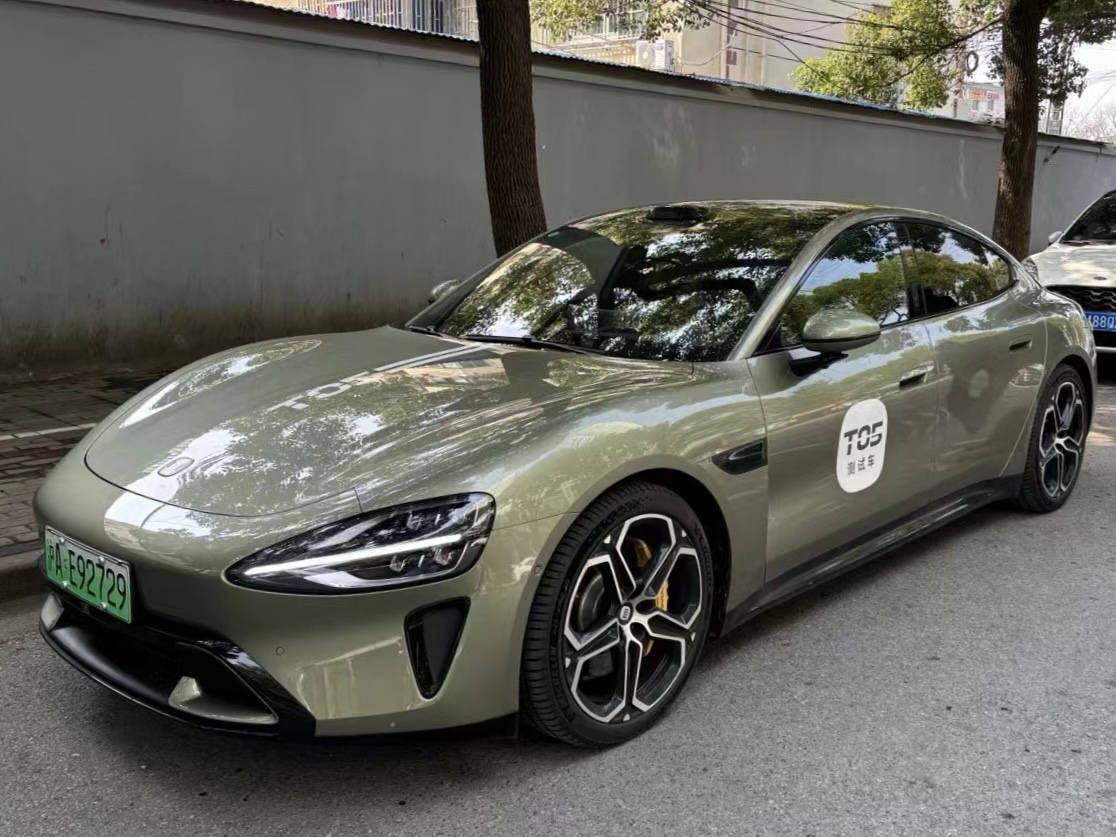
Maserati. Just the name conjures images of exquisite Italian craftsmanship, blistering performance, and a legacy steeped in motorsport glory. For decades, the trident badge has adorned some of the most beautiful and exhilarating automobiles ever conceived, from legendary Grand Prix winners to opulent grand tourers that define luxury. While models like the original Ghibli, the Bora, or the racing Tipo 61 Birdcage frequently grace lists of automotive greats, there’s a treasure trove of other Maseratis that, despite their undeniable charm and significant contributions, haven’t quite received the widespread adoration they truly deserve.
As seasoned enthusiasts, we know that true automotive passion extends beyond the easily recognizable titans. It delves into the rich tapestry of a brand’s history, uncovering models that offered innovation, challenged conventions, or simply delivered an unparalleled driving experience that resonated deeply with their owners. These are the cars that embody Maserati’s diverse spirit, showcasing its engineering prowess and timeless design sensibilities, often waiting to be rediscovered by a new generation of admirers.
Today, we embark on an exhilarating journey through Maserati’s illustrious past and recent history, shining a spotlight on 14 vehicles that, in our expert opinion, possess an enduring appeal that transcends fleeting trends. These are the machines that capture the very essence of Maserati — a unique blend of power, elegance, and distinct character — proving that sometimes, the most captivating stories are found just off the beaten path. Let’s delve into the first half of our selection, exploring seven such remarkable vehicles.
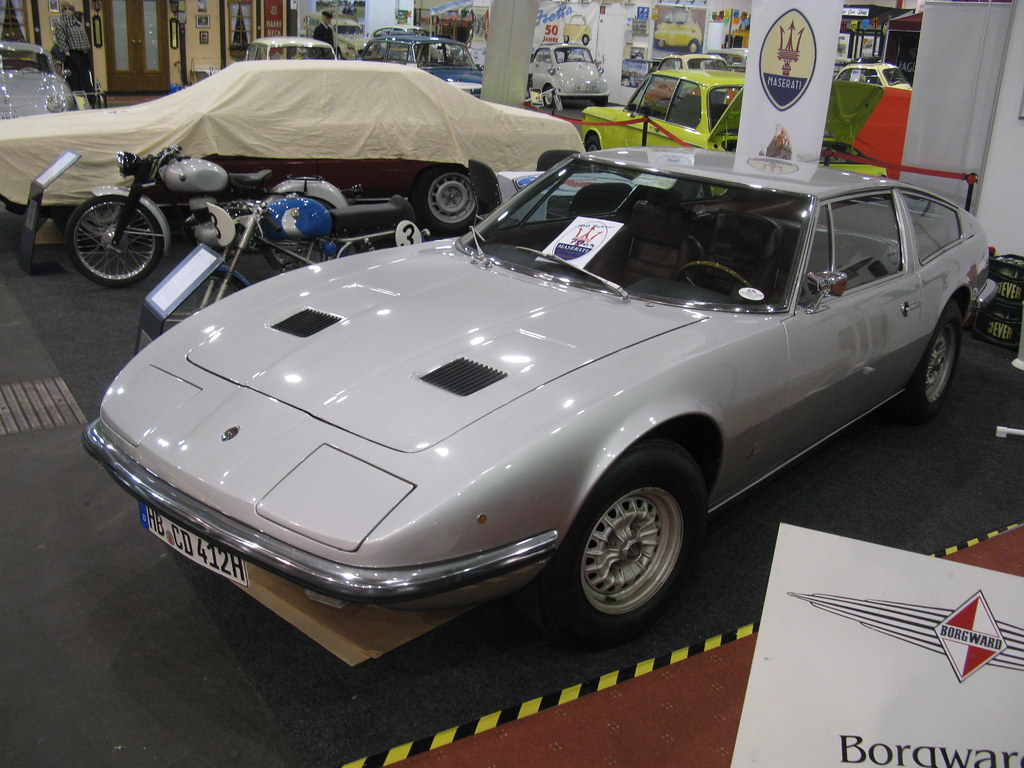
1. **Maserati Indy**The Maserati Indy, a grand tourer produced between 1969 and 1975, is a prime example of a vehicle often overshadowed by its more celebrated siblings. Yet, to overlook the Indy is to miss a crucial chapter in Maserati’s commitment to combining robust performance with genuine practicality, a combination rarely seen in high-performance vehicles of its era. Its name itself, a nod to Maserati’s two consecutive victories at the Indianapolis 500 in the 1930s, speaks to a heritage of speed and triumph.
Underneath its elegant, yet assertive, exterior, the Indy housed a formidable V8 engine. Maserati offered this powerplant in various displacements, including a potent 4.2-liter, a more commanding 4.7-liter, and the ultimate 4.9-liter iteration, ensuring that power was never in short supply. This range of engines allowed the Indy to deliver a driving experience that was both thrilling and sophisticated, capable of swift autobahn cruises and spirited drives on winding country roads.
What truly set the Indy apart, however, was its remarkably spacious interior, a feature that contributed significantly to its grand tourer credentials. Capable of comfortably seating four adults, it defied the typical cramped confines of many sports cars from the same period. This blend of classic design, impressive performance, and practical four-seat comfort has solidified the Indy’s status as a cherished model among discerning collectors, making it an underrated gem worthy of serious consideration.
Car Model Information: 1974 Maserati Indy
Name: Maserati Indy
Manufacturer: Maserati
Production: 1969–1975,1,104 produced
Assembly: Modena
Designer: Virginio Vairo
Class: Grand tourer
BodyStyle: 2+2 (car body style),coupé
Layout: Front-engine, rear-wheel-drive layout
Engine: V8 engine,4.7 L Tipo AM 107/1 V8,4.9 L Tipo AM 107/49 V8
Transmission: ZF Friedrichshafen,Borg-Warner
Wheelbase: 2600 mm
Abbr: on
Length: 4740 mm
Width: 1760 mm
Height: 1220 mm
Weight: 1680 kg
Predecessor: Maserati Sebring
Sp: uk
Categories: 1970s cars, All articles needing additional references, All stub articles, Articles needing additional references from May 2020, Articles with short description
Summary: The Maserati Indy (Tipo AM116) is a four-seater fastback grand tourer produced by the Italian car manufacturer Maserati from 1969 to 1975. It was the first car produced by Maserati under Citroën ownership.
Get more information about: Maserati Indy
Buying a high-performing used car >>>
Brand: Maserati Model: Indy
Price: $74,980 Mileage: 50,538 mi.
Read more about: Commanding Attention: 13 Most Expensive 1970s Cars That Are Worth a Fortune Today for Enthusiasts and Collectors

2. **Maserati Ghibli II**Reviving a legendary name is always a bold move, and with the Ghibli II, produced from 1992 to 1998, Maserati delivered a contemporary interpretation that, while distinct from its iconic predecessor, carved its own niche in the brand’s history. This iteration demonstrated Maserati’s unwavering commitment to performance and innovation, particularly through its advanced powertrain.
At the heart of the Ghibli II was a potent twin-turbocharged V6 engine, a testament to Maserati’s foresight in an era increasingly embracing forced induction. This engine configuration allowed the Ghibli II to punch well above its weight, offering exhilarating acceleration and a responsive, engaging driving dynamic that characterized the best sports coupes of the 1990s. It was a vehicle that truly represented a blend of traditional Italian flair with cutting-edge engineering.
Despite being a product of its time, the Ghibli II has aged remarkably well, maintaining a sleek and stylish design that continues to resonate with automotive enthusiasts today. It offers a unique driving experience that expertly balances raw power with surprising comfort, making it an appealing, albeit often overlooked, choice for those who desire a sports coupe with a distinct personality and a connection to a storied lineage, yet without the commonality of more mainstream rivals.
Car Model Information: 2020 Acura RDX Base
Name: Maserati Ghibli
Caption: 2018 Maserati Ghibli GranLusso
Manufacturer: Maserati
Assembly: Modena,Grugliasco,Turin
Class: Grand tourer,Executive car
BodyStyle: fastback,coupé,Roadster (automobile),Sedan (automobile)
Production: AM115: 1967–1973,AM336: 1992–1998,M157: 2013–2023
Categories: 1970s cars, 1990s cars, 2010s cars, Articles with short description, CS1 Italian-language sources (it)
Summary: Maserati Ghibli is the name of three different cars produced by Italian automobile manufacturer Maserati: the AM115, a V8 grand tourer from 1967 to 1973; the AM336, a V6 twin-turbocharged coupé from 1992 to 1998; and the M157, an executive saloon from 2013 to 2023.
Ghibli is the Libyan Arabic name for the hot dry south-westerly wind of the Libyan desert.
Get more information about: Maserati Ghibli
Buying a high-performing used car >>>
Brand: Maserati Model: Ghibli II
Price: $20,811 Mileage: 137,883 mi.
Read more about: Buyer’s Guide: 14 Classic Cars That Are More Pitfall Than Pride, According to Seasoned Automotive Experts

3. **Maserati Khamsin**Introduced in 1974, the Maserati Khamsin stands as a monumental grand tourer, a vehicle that seamlessly fused captivating elegance with significant engineering prowess. Penned by the legendary Marcello Gandini during his tenure at Bertone, the Khamsin immediately distinguished itself with its audacious wedge-shaped design and a distinctive glass rear panel, a signature element that contributed to its striking visual identity. It was, in essence, Bertone’s first production car work for Maserati, marking a significant collaboration.
Powering this technical and aesthetic marvel was a robust 4.9-liter V8 engine, a powerplant renowned for delivering a smooth yet utterly exhilarating driving experience. This engine, shared with the Ghibli SS, provided 320bhp and 482Nm of torque, ensuring that the Khamsin possessed the grunt to match its provocative looks. The vehicle’s performance was certainly spirited, offering a blend of high-speed cruising ability and responsive acceleration that enthusiasts craved.
What truly underscored the Khamsin’s innovative spirit were its hydraulic systems, cleverly derived from Citroën’s sophisticated technology. These systems elegantly controlled critical functions such as the clutch, brakes, and steering, showcasing a brilliant fusion of Italian design flair and pioneering French engineering. With its all-steel monocoque construction and a near-perfect 50/50 weight distribution, the Khamsin remains a compelling testament to Maserati’s enduring ability to craft vehicles that are not only visually stunning but also technically advanced and dynamically engaging, securing its place as an often-overlooked masterpiece.
Read more about: 19 Classic Italian Sports Cars That Still Ignite Our Passion
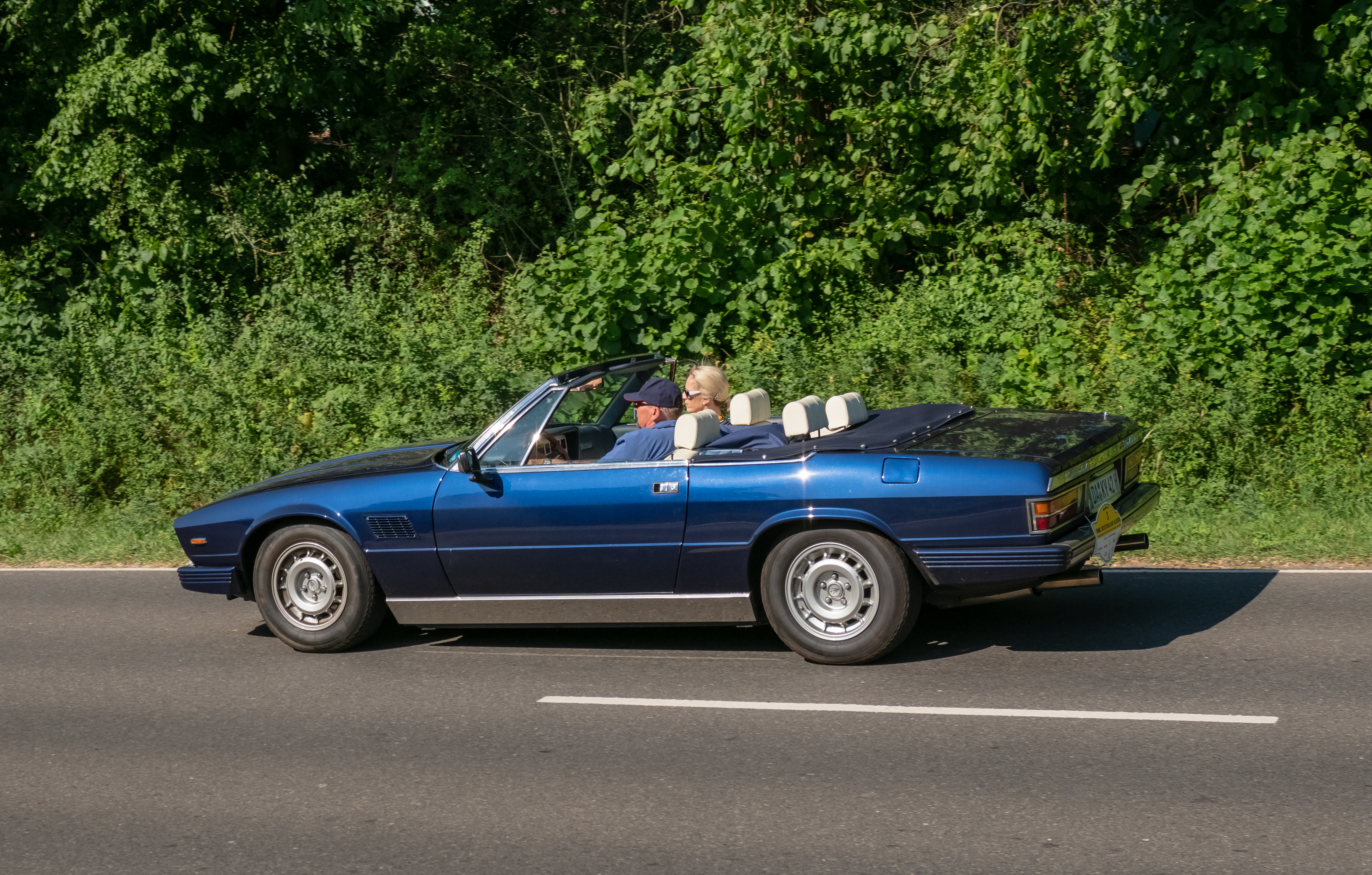
4. **Maserati Kyalami**The Maserati Kyalami, launched in 1976, is a car with a story deeply intertwined with Maserati’s corporate evolution, marking a crucial transition during a challenging financial period for the brand. Named after the famed South African racetrack, it represented Maserati’s continued commitment to offering a luxurious and performance-oriented coupe, even amidst adversity. This model, with its understated elegance, often escapes the broader conversation about Maserati’s classics, yet it embodies a significant moment in its history.
Its design, intriguingly, was based on the De Tomaso Longchamp, a testament to the inter-brand dynamics that characterized the Italian automotive industry in that era. Despite this shared lineage, the Kyalami wore its Maserati badge with distinction, presenting a refined aesthetic that exuded quiet confidence rather than overt flashiness. This sophisticated styling belied the raw power that lay beneath its bonnet.
Equipped with a potent V8 engine, the Kyalami provided ample power, ensuring a thoroughly enthusiastic driving experience for those behind the wheel. Its blend of luxury, performance, and a somewhat rare profile has greatly enhanced its appeal among astute collectors, who recognize its unique position within Maserati’s rich historical narrative. The Kyalami serves as a fascinating and often underappreciated piece of the brand’s storied past, offering a glimpse into its resilience and enduring commitment to automotive excellence.
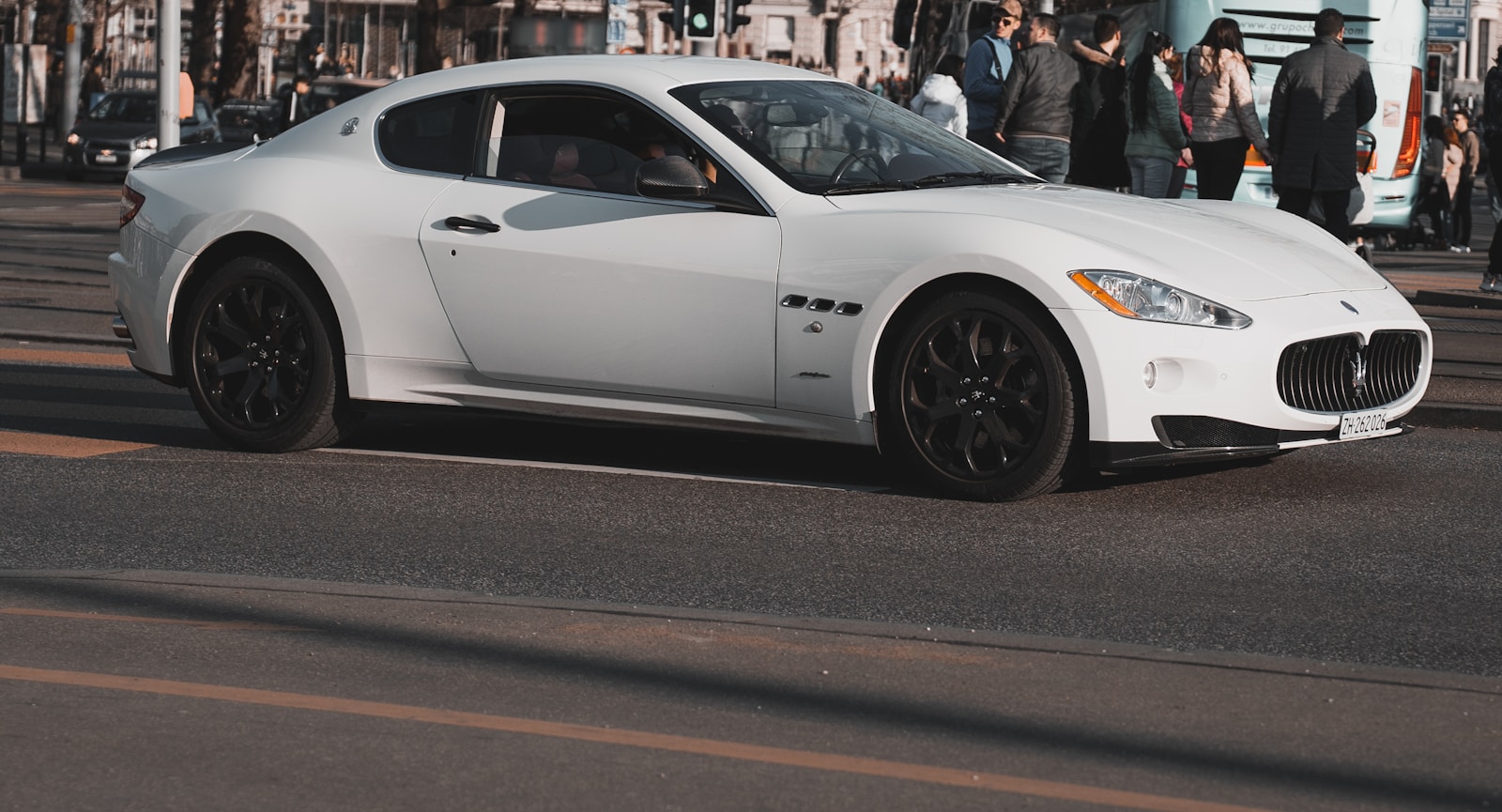
5. **Maserati Merak**The Maserati Merak, produced from 1972 to 1983, presents a truly unique proposition, offering an ingenious combination of sportiness and unexpected practicality. Sharing its fundamental design language and coachwork with its more powerful sibling, the Bora, the Merak distinguished itself by employing a more compact V6 engine. This strategic choice made it significantly lighter and more agile, providing a different, yet equally engaging, driving dynamic.
Visually, the Merak is instantly recognizable for its distinctive design, characterized by a gracefully sloping hood that flows into a fastback rear, a silhouette that is both elegant and assertive. Yet, its true innovation lay beneath, where the decision to use a V6 engine allowed for a significant re-engineering of the interior. This mid-engine layout, coupled with the smaller powerplant, freed up crucial space, leading to a cabin that was notably more spacious than many of its direct contemporaries.
Indeed, the Merak cleverly offered a 2+2 seating configuration, with two extra (albeit very cramped) seats in the rear, adding a touch of versatility that was a rarity in mid-engined supercars of the era. This made the Merak a compelling choice for those who appreciated stunning Italian design, exhilarating performance, and a welcome hint of practicality. It was a more affordable version of the Bora, and its production numbers—over 1,800 units made—speak to its wider appeal and commercial success, solidifying its place as a recognizable and enduring supercar.
Car Model Information: 1980 Maserati Merak SS
Name: Maserati Merak
Manufacturer: Maserati
Production: 1972–1983,1,830 produced
Assembly: Modena
Layout: Rear mid-engine, rear-wheel drive layout
Class: Sports car
BodyStyle: 2+2 (car body style),coupé
Engine: V6,2.0 L 90° V6
Transmission: Citroën
Wheelbase: 2600 mm
Abbr: on
Length: 4335 mm
Width: 1768 mm
Height: 1134 mm
Weight: convert
Related: Maserati Bora,Citroën SM
Designer: Giorgetto Giugiaro
Sp: uk
Categories: 1980s cars, 2+2 coupés, All articles needing additional references, All articles with unsourced statements, Articles needing additional references from November 2018
Summary: The Maserati Merak (Tipo AM122) is a mid-engined 2+2 sports car produced by Maserati between 1972 and 1983. The Merak was closely related to the Maserati Bora, sharing part of its structure and body panels, but was powered by a 3.0 L V6 in place of the latter’s 4.7 L V8. The extra cabin space gained by fitting a smaller and more compact powertrain was used to carve out a second row of seats—suitable for children or very small adults—making the Merak not just a less expensive alternative to the Bora but also a 2+2.
Get more information about: Maserati Merak
Buying a high-performing used car >>>
Brand: Maserati Model: Merak
Price: $71,200 Mileage: 57,555 mi.
Read more about: Commanding Attention: 13 Most Expensive 1970s Cars That Are Worth a Fortune Today for Enthusiasts and Collectors
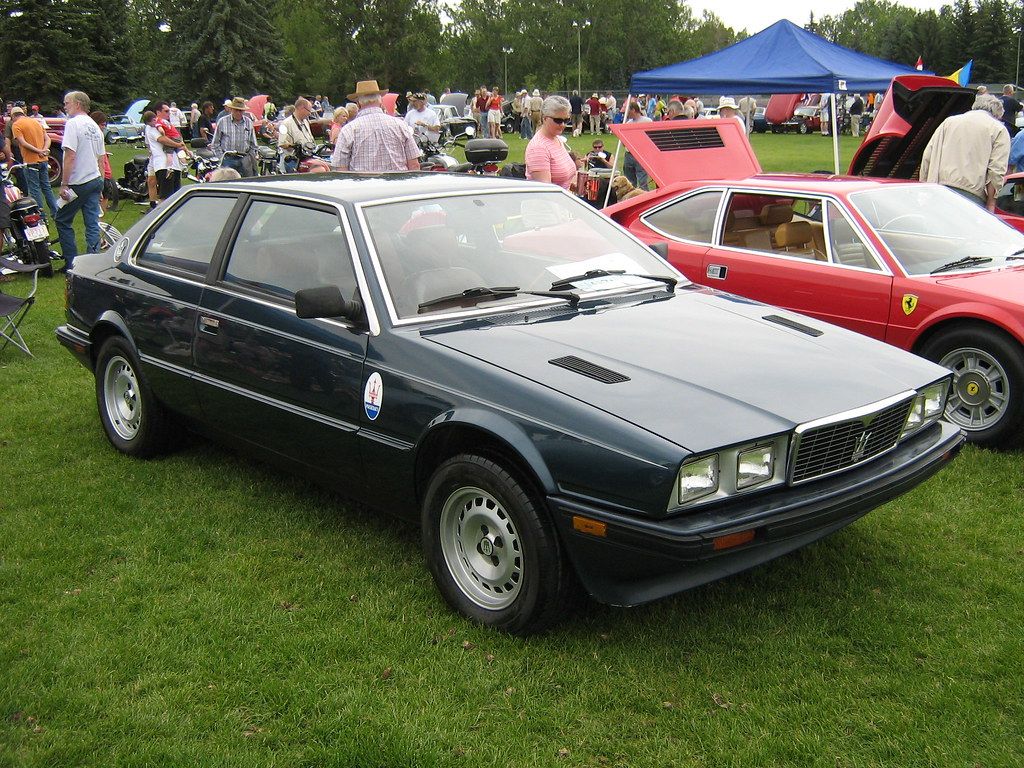
6. **Maserati Biturbo**The Maserati Biturbo, introduced in 1981, undeniably marked a pivotal new era for the brand. Born from a vision to broaden Maserati’s appeal, it aimed to make the marque more accessible without compromising on performance. Crucially, it stands as a landmark in automotive history as the very first production car to feature a twin-turbocharged engine, an innovation that set a significant precedent for performance vehicles worldwide.
While its initial launch was met with challenges, particularly concerning quality control, the Biturbo series demonstrated Maserati’s tenacity and commitment to improvement. Over its production run, which spanned several years, the Biturbo evolved significantly, introducing various body styles, including coupes, sedans, and convertibles, and most importantly, experiencing continuous enhancements in reliability and overall refinement. This evolutionary journey reflects a dedication to overcoming obstacles and perfecting an ambitious concept.
The innovative spirit of the Biturbo, combined with its relative affordability for a Maserati, makes it a truly noteworthy option for anyone delving into the brand’s diverse and sometimes complex history. It represents a bold attempt to democratize high-performance Italian motoring and, despite its early hurdles, proved instrumental in shaping Maserati’s trajectory through the 1980s and beyond, making it an essential, if at times controversial, part of its heritage.
Car Model Information: 1985 Maserati Biturbo Base
Name: Maserati Biturbo
Caption: Maserati Biturbo E
Manufacturer: Maserati
Production: 1981–1994
Assembly: Modena,Rho, Lombardy
Related: Maserati Shamal,Maserati Ghibli#Ghibli (AM336),Maserati Barchetta,Maserati Quattroporte#Quattroporte IV,Maserati Karif
Designer: Pierangelo Andreani (1977),Marcello Gandini,Zagato
Class: Grand tourer
BodyStyle: 2+2 (car body style),coupé,sedan (car),Cabriolet (automobile)
Layout: Front-engine, rear-wheel-drive layout
Engine: twin-turbocharged,2.5 L twin-turbocharged 90° V6,2.8 L twin-turbocharged 90° V6
Transmission: ZF Friedrichshafen,Automatic transmission,ZF Friedrichshafen
Wheelbase: {{convert,2,514,mm,in,1,abbr=on
Length: {{convert,4,150,mm,in,1,abbr=on
Abbr: on (228)
Width: {{convert,1,710,mm,in,1,abbr=on
Height: {{convert,1,310,mm,in,1,abbr=on
Successor: Maserati Ghibli#Ghibli (AM336),Maserati Quattroporte#Quattroporte IV
Sp: uk
Categories: 1990s cars, All articles needing additional references, All articles with unsourced statements, Articles needing additional references from November 2019, Articles needing additional references from October 2010
Summary: The Maserati Biturbo is a family of executive grand tourers produced by Italian automobile manufacturer Maserati between 1981 and 1994. The original Biturbo was a two-door, four-seater notchback coupé (of somewhat smaller dimensions than the BMW 3 Series of the time) featuring, as the name implies, a two-litre V6 engine with two turbochargers and a luxurious interior.
The car was designed by Pierangelo Andreani, Chief of Centro Stile Maserati up to 1981, somewhat influenced by the design of the then recent Quattroporte III (penned by Italdesign Giugiaro).
All Maserati models introduced from the Biturbo’s inception in 1981, until 1997, were based on variants of the original Biturbo architecture, including the later grand tourers like the Shamal and Ghibli II, as well as the 1994 fourth generation Quattroporte, which used an evolved and slightly stretched (to 2.65 m / 104.3 in wheelbase) Biturbo Saloon platform.
The Barchetta, while of a different layout entirely, used an ultimate version of the Biturbo V6 engine.
Get more information about: Maserati Biturbo
Buying a high-performing used car >>>
Brand: Maserati Model: Biturbo
Price: $13,899 Mileage: 18,319 mi.
Read more about: Buyer’s Guide: 14 Classic Cars That Are More Pitfall Than Pride, According to Seasoned Automotive Experts
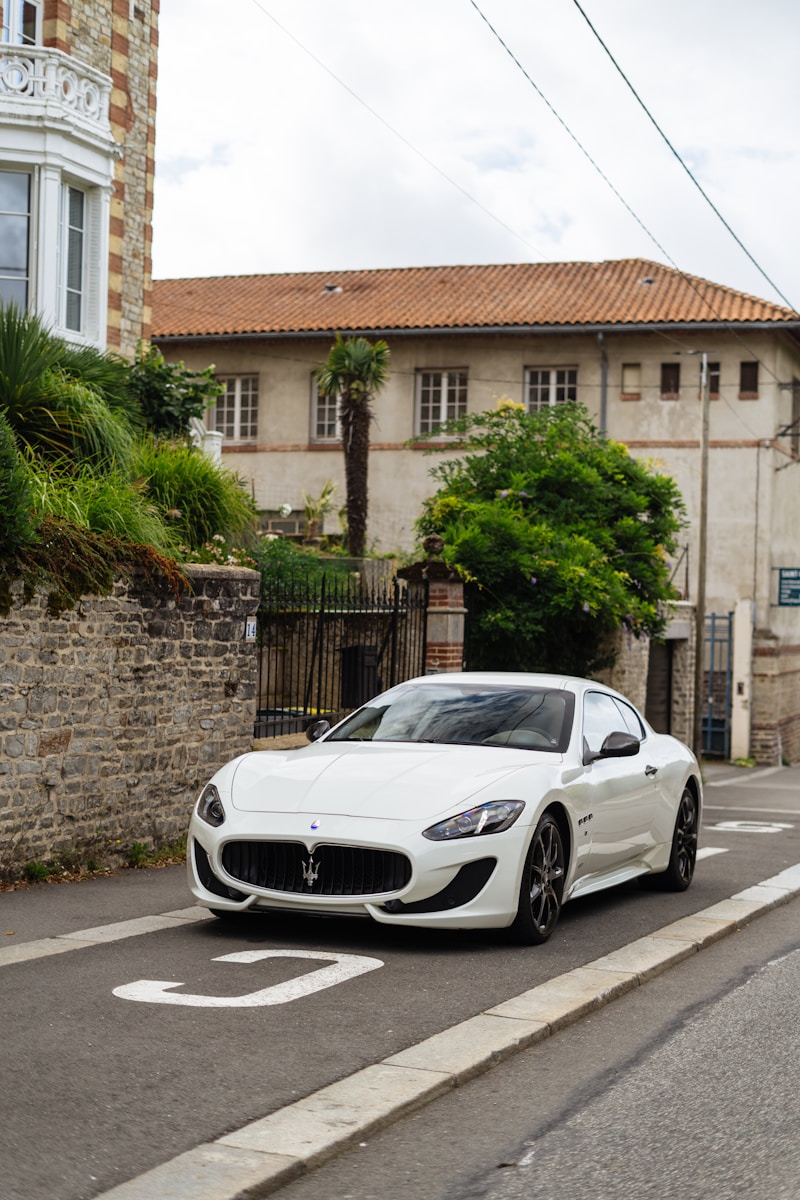
7. **Maserati GranTurismo S**Leaping forward to the modern era, the Maserati GranTurismo S, launched in 2008, has already cemented its status as a contemporary classic, exuding an undeniable timeless appeal that few modern cars achieve. At its core lies a naturally aspirated 4.7-liter V8 engine, a marvel of engineering that delivers not just thrilling performance, but also a sonorous exhaust note that is, arguably, one of the finest automotive soundtracks ever produced. This engine’s character and melodic voice are central to the car’s allure.
Styled by the legendary Pininfarina design house, the GranTurismo S embodies a perfect marriage of breathtaking aesthetics and luxurious comfort. Its sweeping lines and elegant proportions ensure it turns heads wherever it goes, while the spacious and sumptuously appointed interior provides an environment of refined indulgence. It’s a car designed for both spirited driving and long-distance cruising, effortlessly blending two often-conflicting attributes.
The combination of its striking design, dynamic capabilities, and the unparalleled symphony of its V8 engine ensures that the GranTurismo S remains a firm favorite among enthusiasts worldwide. It stands as a powerful testament to Maserati’s enduring dedication to crafting vehicles that not only captivate the senses but also offer a holistic, engaging driving experience that transcends the ordinary, earning its place on our list of enduringly appealing Maseratis.
Having journeyed through some of Maserati’s most compelling yet often overlooked gems, our expedition into the trident’s extraordinary legacy is far from over. Now, we shift gears to explore seven more classic and historically significant Maseratis, machines that have indelibly shaped automotive history, showcasing their engineering prowess and the timeless allure that continues to captivate enthusiasts.
Car Model Information: 2023 Nissan Rogue SL
Name: Maserati GranTurismo,Maserati GranCabrio
Manufacturer: Maserati
Production: 2007 – December 2019 (40,520 produced),April 2023 – present
ModelYears: 2008–2019,2023–present
Class: Grand tourer
BodyStyle: 2+2 (car body style),coupé
Predecessor: Maserati Coupé
Categories: 2010s cars, All articles lacking reliable references, All articles with unsourced statements, Articles lacking reliable references from October 2024, Articles with hAudio microformats
Summary: The Maserati GranTurismo and GranCabrio are a series of grand tourers produced by the Italian manufacturer Maserati, succeeding the Maserati Coupé and Spyder.
The first generation GranTurismo (M145) was introduced at the 2007 Geneva Motor Show and was produced from 2007 to December 2019. It set a record for the fastest development of a car, going from design to production in just nine months. The model featured a 4.2-litre V8 engine initially, which was later upgraded to a 4.7-liter engine in the GranTurismo S variant. The GranTurismo MC, a racing version developed for the FIA GT4 European Cup, and the GranTurismo MC Sport Line, a customisation programme, were also part of the lineup.
The GranTurismo Sport, introduced in 2012, replaced the GranTurismo S and featured a revised 4.7-litre engine. The GranTurismo MC Stradale, unveiled in 2010, is a more track-focused version inspired by a race variant. The GranCabrio convertible version was unveiled at the 2009 Frankfurt Motor Show and produced from 2010 to 2019. The GranCabrio Sport was introduced in 2011 and the GranCabrio MC was launched in 2013, the latter featuring improved aerodynamics and a light bump in power.
The second generation, GranTurismo II (M189), was revealed in 2022 and began production in April 2023. It offers three models: Modena, Trofeo, and Folgore (electric). Based on the Giorgio Sport platform, petrol engined models feature a newly-developed 3.0-litre Nettuno twin-turbocharged V6 engine, with the Trofeo variant being the most powerful at 550 PS (405 kW; 542 hp). The Folgore model is a battery electric version with a range of 450 km (279.6 mi).
Get more information about: Maserati GranTurismo
Buying a high-performing used car >>>
Brand: Maserati Model: GranTurismo S
Price: $24,743 Mileage: 41,652 mi.
Read more about: Bringing Back Legends: 15 Iconic ’60s Cars That Truly Deserve a Modern Comeback
8. **Maserati 250F**The Maserati 250F is not just a car; it’s a legend etched into the annals of Formula 1 history. Just 26 examples of this magnificent machine were ever built, making it a true rarity that burned brightly before fading from competitive relevance in the late 1950s. Its profound impact, particularly as a winning machine for icons like Stirling Moss and Juan Manuel Fangio, cemented its place in the hearts of racing fans and collectors.
This open-wheeled marvel primarily featured the 220bhp, 2.5-litre Maserati A6 straight-six engine, a powerhouse designed to dominate the 2.5-litre Formula 1 championship. It made an immediate, winning debut at the 1954 Argentine Grand Prix, piloted to victory by the legendary Juan Manuel Fangio. Stirling Moss famously described the 250F as ‘the best front-engined F1 car he drove,’ a testament to its exceptional handling and raw capability.
In 1957, following crucial engine modifications, Juan Manuel Fangio drove the model to four more Formula 1 World Championship victories, including his legendary win at the 1957 German Grand Prix where he shattered the Nürburgring lap record ten times. Though new mid-engined F1 cars by 1958 rendered the 250F less competitive, its legacy endured. Privateer teams continued to campaign it until 1960. Over its six-year career, an incredible 277 250Fs competed in 46 Formula 1 world championship races, notching up eight outright wins, solidifying its status as a cornerstone of Maserati’s racing heritage.

9. **Maserati Tipo 61 Birdcage**The Maserati Tipo 61, affectionately known as the “Birdcage,” stands as a genuinely iconic Maserati, not least because of its visually striking and innovative design. Built between 1959 and 1961 specifically for demanding long-endurance racing events like the 24 Hours of Le Mans, its appearance was radically different from anything else on the track, making it instantly recognizable and deeply memorable.
The nickname “Birdcage” derived from its revolutionary tubular space frame chassis, a testament to Giulio Alfieri’s ingenious design. This intricate chassis comprised over 200 chro-moly steel tubes meticulously welded together, resulting in a structure that was both significantly more rigid and lighter than conventional methods of the era. This engineering feat contributed immensely to its formidable performance capabilities.
Underneath its distinctive form, the Birdcage was powered by a 2.9-litre inline-four engine, producing a robust 250bhp. When paired with its astonishingly light 600kg frame, this front-engined machine could achieve exhilarating speeds of up to 177mph. Stirling Moss notably won the Tipo 61’s inaugural race in 1959, spurring various teams to embrace it for competition. While reliability issues sometimes plagued its Le Mans attempts, the Camoradi team achieved significant triumphs, winning the challenging 1,000km Nürburgring race in both 1960 and 1961, cementing the Birdcage’s reputation as a wild, iconic, and exceptionally capable racer.
Car Model Information: 2021 Lexus GX 460 Base
Name: Maserati Tipo 60/61
Aka: Birdcage
Manufacturer: Maserati
Assembly: Modena, Italy
Production: ubl
Class: Racing car
BodyStyle: speedster (automobile)
Layout: ubl
Engine: ubl
Transmission: Manual transmission
Weight: {{convert,570,kg,lb,abbr=on
Abbr: on
Wheelbase: 2200 mm
Successor: Maserati Tipo 151
Designer: Giulio Alfieri
Categories: 24 Hours of Le Mans race cars, Articles with short description, Commons category link is on Wikidata, Maserati vehicles, Short description is different from Wikidata
Summary: The Maserati Tipo 60/61 (commonly referred to as the Maserati Birdcage) are a series of sports racing cars produced between 1959 and 1961 by Italian automobile manufacturer Maserati for privateers racing in sports car events including the 24 Hours of Le Mans in the 2-litre and 3-litre racing category. It used an intricate tubular space frame chassis, containing about 200 chro-moly steel tubes welded together, arranged triangular formation at high stress areas of the chassis, hence the nickname “Birdcage”. This method of construction provided a more rigid and, at the same time, lighter chassis than other racing cars of the time.
By recessing the windscreen base into the bodywork, Maserati was able to reduce the effect of new Le Mans rules demanding a tall windscreen.
The Camoradi team became famous racing the Tipo 61s but, despite being very competitive, the Birdcage was somewhat unreliable and retired from many races due to problems with the drivetrain.
The road legal version of the 2004 Maserati MC 12 was available in a white colour with blue stripes livery as a tribute to the Tipo 61 and the Camoradi racing team.
The Tipo 60/61 were succeeded by the Tipo 151 which used a more conventional tubular chassis.
Get more information about: Maserati Tipo 61
Buying a high-performing used car >>>
Brand: Maserati Model: Tipo 61
Price: $43,929 Mileage: 50,292 mi.
Read more about: The Maserati MC12: A Deep Dive into the Genesis, Engineering, and Racing Triumphs of a Rare Automotive Masterpiece
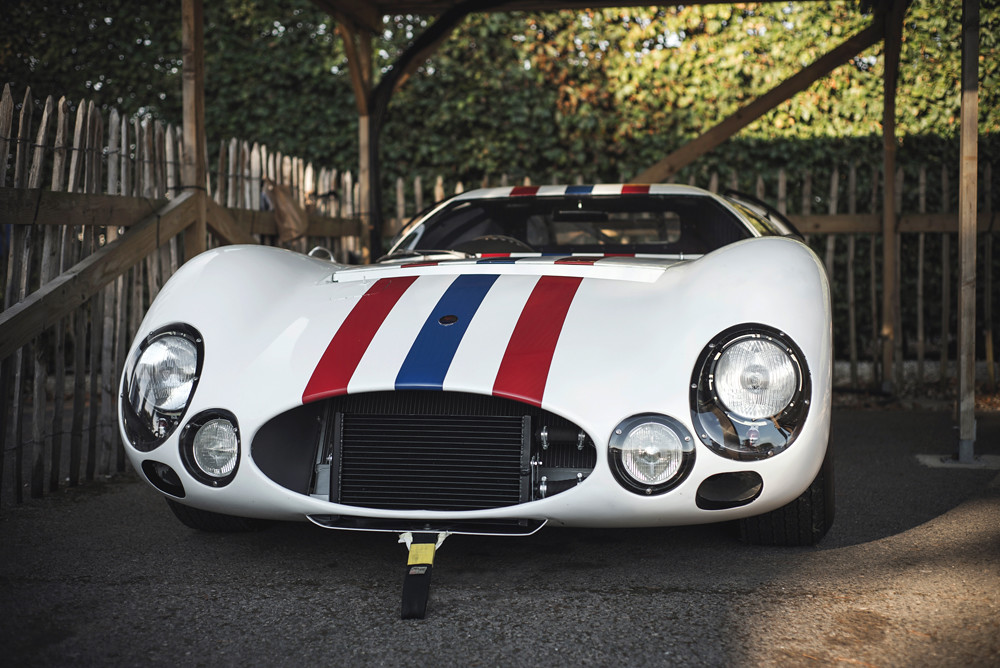
10. **Maserati Tipo 151**Following in the footsteps of the revolutionary Tipo 61 Birdcage, the Maserati Tipo 151 emerged a few years later, in 1962 and 1963, carrying forward an intensive commitment to aerodynamic streamlining. This particular unit drew considerable inspiration from World Sportscar Championship motors, yet it pushed the streamlined design concept to a logical and captivating extreme, refining the visual language established by its predecessors.
Designed by the brilliant Giulio Alfieri and meticulously refined in a wind tunnel at Milan University, the Tipo 151’s form was a masterclass in aerodynamic efficiency. It featured a sleek, elongated bodywork derived from the powerful 450S, but with a sharply-truncated Kamm tail. This distinctive design choice was not merely aesthetic; it was engineered to enhance airflow and optimize performance, a sophisticated approach for its time.
Powering this beautifully sleek endurance runner was a robust 4.0-litre V8 engine, providing the necessary grunt for sustained high-speed competition. Much like the Birdcage, the Tipo 151 was purpose-built for endurance racing events, showcasing Maserati’s expertise in crafting machines capable of withstanding the rigors of long-distance contests while delivering uncompromising speed and agility. Its unique Le Mans successes firmly establish it as a historically significant, albeit sometimes overlooked, classic.
Car Model Information: 2021 Lexus GX 460 Base
Name: Maserati Tipo 151
Manufacturer: Maserati
Production: 1962
Assembly: Modena, Italy
Class: Racing car
BodyStyle: coupé
Engine: V8 engine,4.9 L V8
Layout: Front-engine, rear-wheel-drive layout#Front mid-engine, rear-wheel-drive layout
Transmission: manual transmission
Weight: {{Convert,975,kg,lb,abbr=on
Wheelbase: Convert
Predecessor: Maserati Birdcage
Designer: Giulio Alfieri,Piero Drogo
Categories: 1960s cars, Articles with short description, Cars introduced in 1962, Coupés, Front mid-engine, rear-wheel-drive vehicles
Summary: The Maserati Tipo 151 is a racing car manufactured by Italian automobile manufacturer Maserati for the 1962 LeMans season to compete in the experimental GT car class. Three cars were built in total, one for Johnny Simone of Maserati France (151 002) with a red exterior colour and white tri-stripes whilst two were built for Briggs Cunningham (151 004 and 151 006) for his racing team. These cars had a white body with two blue stripes.
Get more information about: Maserati Tipo 151
Buying a high-performing used car >>>
Brand: Maserati Model: Tipo 151
Price: $43,929 Mileage: 50,292 mi.
Read more about: Beyond the Garage: 12 Legendary Classic Cars Skyrocketing in Value, Defining Automotive Investment Potential
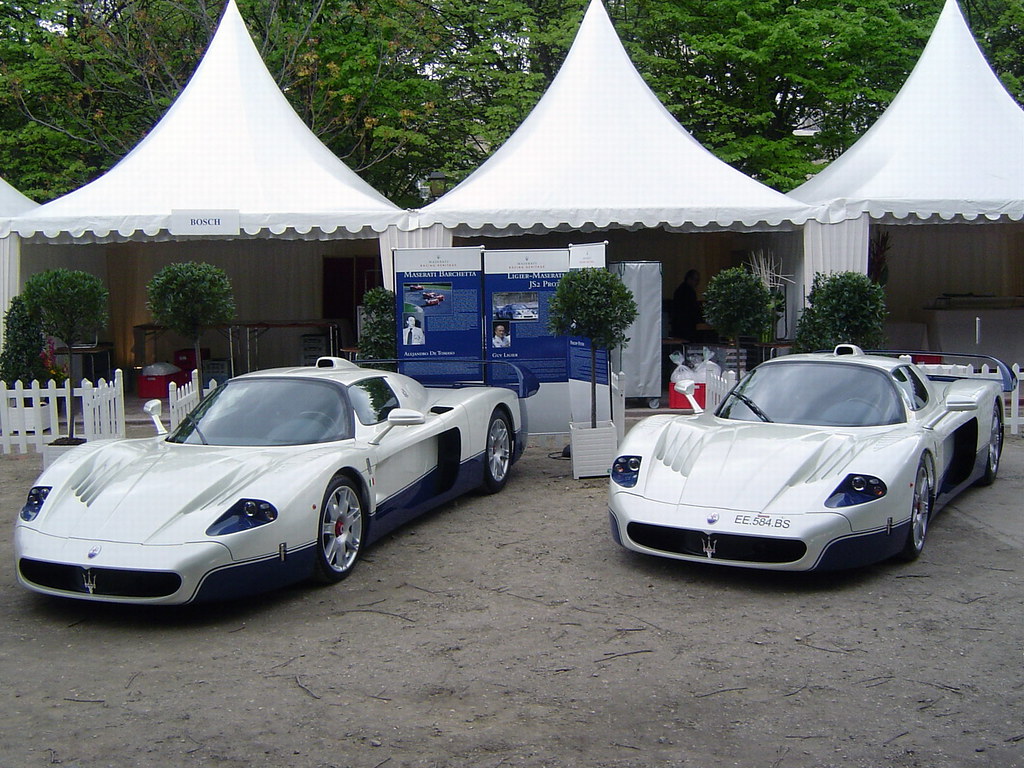
11. **Maserati MC12**Leaping into the 21st century, the Maserati MC12, produced in 2004 and 2005, represents a spectacular racing revival for a brand that had been out of GT racing for nearly four decades. This striking model was conceived with a clear purpose: to allow a racing variant to compete in the prestigious FIA GT Championship, a triumphant return to the competitive stage.
Underneath its wide, race-inspired body, the MC12 was effectively a Ferrari Enzo, sharing that potent 6.0-litre F140 V12 engine. This formidable powerplant, combined with Maserati’s bespoke chassis and aerodynamic refinements, created a fearsome machine designed for blistering performance. It was a clear statement of intent, signaling Maserati’s renewed ambition in the high-stakes world of international motorsport.
Exclusivity was paramount for the MC12, with only 50 road-going examples ever built, each selling well in advance of production. These ultra-rare supercars were only available painted in a distinctive blue and white livery, a deliberate and proud homage to the iconic ‘Birdcages’ of the 1960s, visually linking Maserati’s past racing glory with its contemporary resurgence. The MC12’s iconic design, racing pedigree, and extreme rarity solidify its status as a modern classic.
Read more about: Beyond the Pitch: David Beckham’s Coveted 1o-Car Collection — A Masterclass in Automotive Luxury and Style
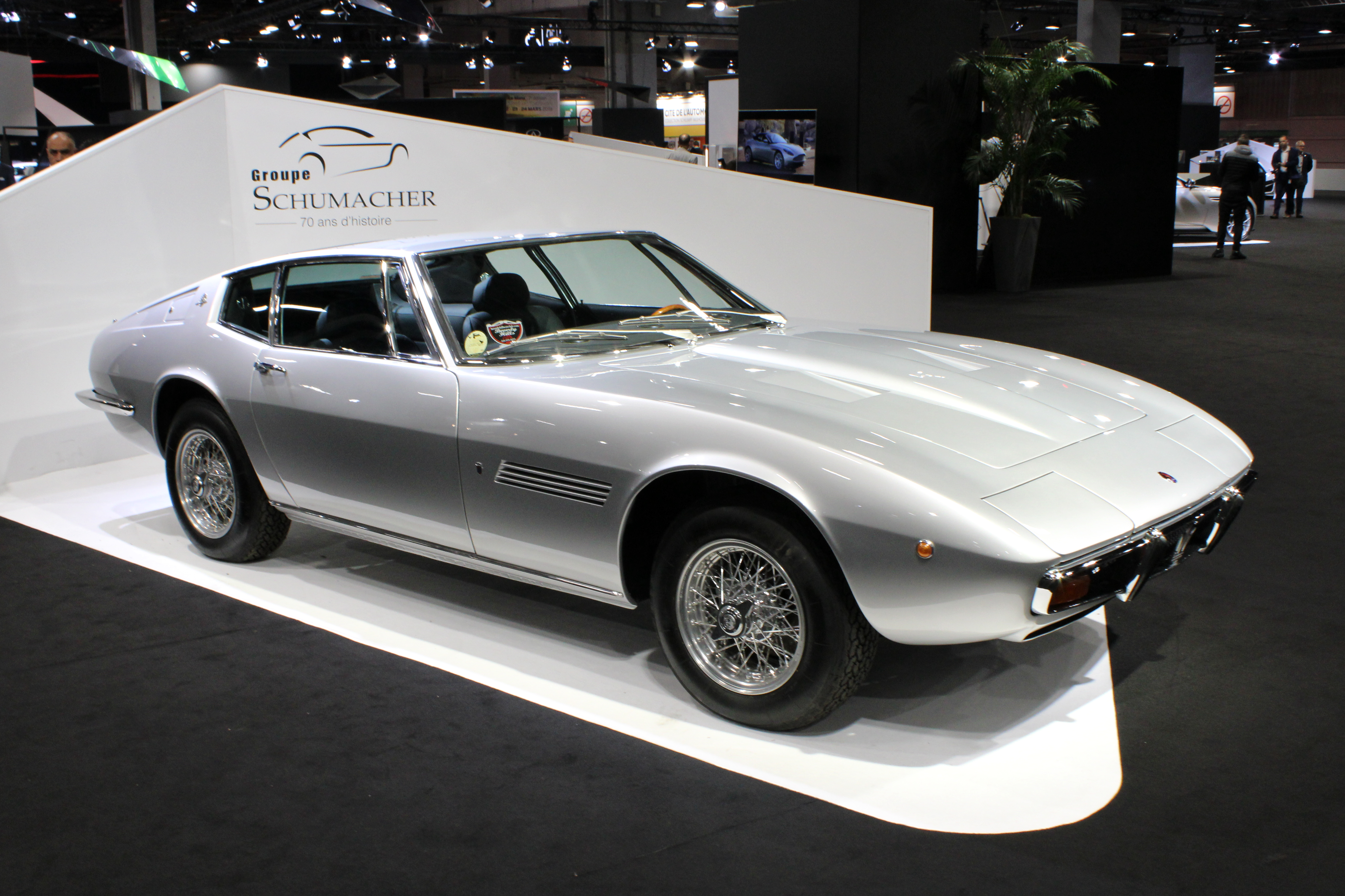
12. **Maserati Ghibli (Original)**Before the modern iterations and even the Ghibli II, there was the original Maserati Ghibli, produced between 1967 and 1973—a true tour de force that ranks among the most admired GT sports cars of the 1960s. Designed by a young Giorgetto Giugiaro during his pivotal tenure at Ghia, its distinctive long, flat nose and exceptionally low-slung profile instantly set it apart, making it an iconic visual statement.
Measuring just under four feet tall from wheel to roof, the Ghibli’s dramatic proportions made it a captivating sight, a low-rider par excellence that exuded effortless cool. While its aesthetics were undeniably stunning, its aggressive stance hinted at the potent performance capabilities housed within its steel body, designed to challenge contemporary rivals like the Ferrari Daytona and Aston Martin DBS.
Under the elongated bonnet lay a 4.7-litre dry sump V8 engine, mated to a five-speed ZF manual transmission. Making 306bhp, it could accelerate from 0-60 mph in a swift 6.8 seconds and boasted a top speed of an impressive 155mph, truly establishing it as a high-performance GT of its era. The Ghibli’s front-engined, rear-wheel-drive configuration offered a sublime driving experience, cementing its status as a timeless classic.
Car Model Information: 2018 Maserati Ghibli Base
Name: Maserati Ghibli
Caption: 2018 Maserati Ghibli GranLusso
Manufacturer: Maserati
Assembly: Modena,Grugliasco,Turin
Class: Grand tourer,Executive car
BodyStyle: fastback,coupé,Roadster (automobile),Sedan (automobile)
Production: AM115: 1967–1973,AM336: 1992–1998,M157: 2013–2023
Categories: 1970s cars, 1990s cars, 2010s cars, Articles with short description, CS1 Italian-language sources (it)
Summary: Maserati Ghibli is the name of three different cars produced by Italian automobile manufacturer Maserati: the AM115, a V8 grand tourer from 1967 to 1973; the AM336, a V6 twin-turbocharged coupé from 1992 to 1998; and the M157, an executive saloon from 2013 to 2023.
Ghibli is the Libyan Arabic name for the hot dry south-westerly wind of the Libyan desert.
Get more information about: Maserati Ghibli
Buying a high-performing used car >>>
Brand: Maserati Model: Ghibli
Price: $16,980 Mileage: 66,162 mi.
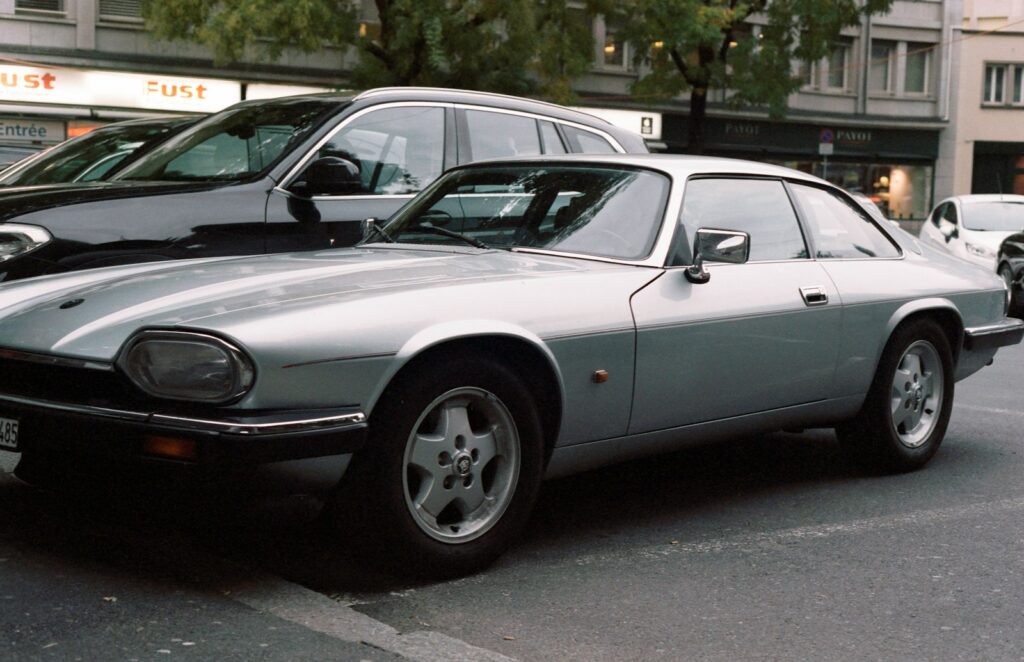
13. **Maserati Tipo 26**To truly appreciate Maserati’s enduring legacy, one must journey back to its very genesis, to the Maserati Tipo 26. This extraordinary vehicle, emerging in the mid-1920s, was the first of its kind—a true trailblazer and, most significantly, the brand’s maiden racing car. It marked a pivotal moment in automotive history, symbolizing Maserati’s bold step as it struck out on its own as an independent supercar designer, breaking away from its origins with Diatto.
As the name suggests, the Tipo 26 made its debut in 1926, laying the foundation for a brand that would become synonymous with performance and elegance. With only 11 units leaving the assembly lines, it was an exclusive machine designed for one purpose: competition. And compete it did, proving to be a strong contender and indeed a winner across many prestigious Grands Prix events of its time.
While it may have lacked the extreme aerodynamic streamlining of later Maserati racing cars, the Tipo 26 possessed a rugged charm and an undeniable effectiveness on the track. Its success on the racing circuit immediately established Maserati as a serious player in motorsport, setting a high standard for future generations of trident-badged performance vehicles. This pioneering machine laid the groundwork for decades of automotive excellence.
Car Model Information: 2020 Acura RDX Base
Name: Maserati Tipo 60/61
Aka: Birdcage
Manufacturer: Maserati
Assembly: Modena, Italy
Production: ubl
Class: Racing car
BodyStyle: speedster (automobile)
Layout: ubl
Engine: ubl
Transmission: Manual transmission
Weight: {{convert,570,kg,lb,abbr=on
Abbr: on
Wheelbase: 2200 mm
Successor: Maserati Tipo 151
Designer: Giulio Alfieri
Categories: 24 Hours of Le Mans race cars, Articles with short description, Commons category link is on Wikidata, Maserati vehicles, Short description is different from Wikidata
Summary: The Maserati Tipo 60/61 (commonly referred to as the Maserati Birdcage) are a series of sports racing cars produced between 1959 and 1961 by Italian automobile manufacturer Maserati for privateers racing in sports car events including the 24 Hours of Le Mans in the 2-litre and 3-litre racing category. It used an intricate tubular space frame chassis, containing about 200 chro-moly steel tubes welded together, arranged triangular formation at high stress areas of the chassis, hence the nickname “Birdcage”. This method of construction provided a more rigid and, at the same time, lighter chassis than other racing cars of the time.
By recessing the windscreen base into the bodywork, Maserati was able to reduce the effect of new Le Mans rules demanding a tall windscreen.
The Camoradi team became famous racing the Tipo 61s but, despite being very competitive, the Birdcage was somewhat unreliable and retired from many races due to problems with the drivetrain.
The road legal version of the 2004 Maserati MC 12 was available in a white colour with blue stripes livery as a tribute to the Tipo 61 and the Camoradi racing team.
The Tipo 60/61 were succeeded by the Tipo 151 which used a more conventional tubular chassis.
Get more information about: Maserati Tipo 61
Buying a high-performing used car >>>
Brand: Maserati Model: Tipo 26
Price: $20,811 Mileage: 137,883 mi.
Read more about: Unmasking the Automotive Paradox: 15 “Classic” Cars You’d Expect to Be Priceless But Are Actually Worth Almost Nothing
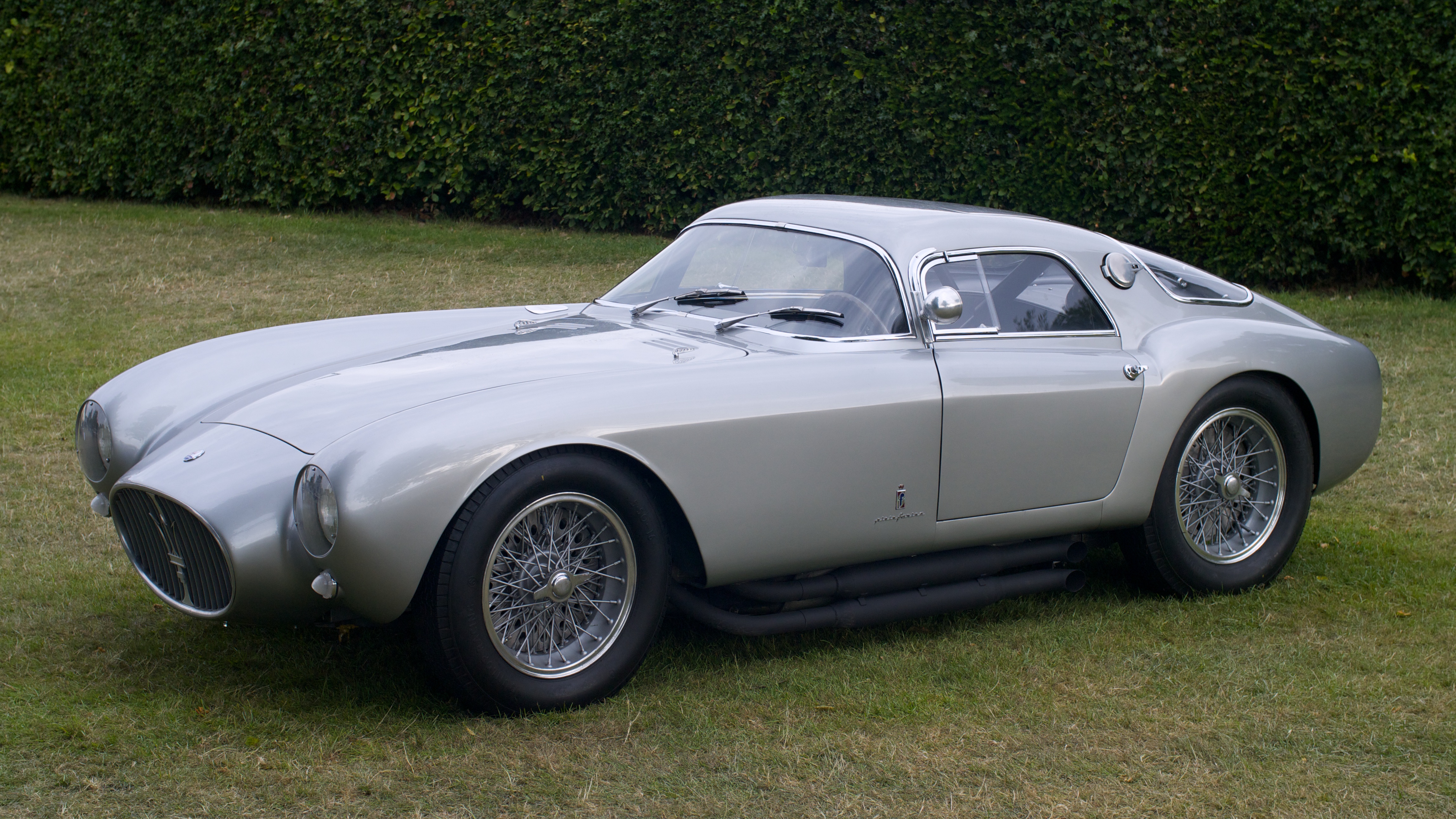
14. **Maserati A6GCS/53**The Maserati A6GCS/53 is widely regarded as one of the seminal sports cars of the 1950s, a derivative of Maserati’s earlier A6 sportscar. This magnificent machine holds a unique place in history as the first true production Maserati, marking a significant shift for a manufacturer that had, prior to the war, exclusively crafted race cars. Its introduction signaled Maserati’s foray into a broader market while retaining its competitive edge.
Beyond its engineering, the A6GCS/53 was extraordinarily beautiful. It featured different coupé bodies exquisitely designed by legendary coachbuilders such as Pininfarina and Zagato, each bringing their distinct artistic flair to create a visually stunning vehicle. This collaboration with Italy’s finest designers ensured that the A6GCS/53 was not just fast, but also breathtakingly elegant, a true work of automotive art.
Underneath its stunning coachwork lay an immensely powerful engine, delivering a rough but exhilarating ride that thrilled drivers. The car was extraordinarily powerful and extremely noisy, offering an unfiltered, visceral driving experience characteristic of the high-performance vehicles of its era. This blend of raw power and sophisticated design made it a formidable presence on the track and on the road. Shockingly, only a minute number of four cars ever saw roads, making it an exceptionally rare and highly coveted masterpiece.
As we conclude this exhilarating dive into Maserati’s storied past and present, it’s clear that the allure of the trident badge extends far beyond the familiar. From groundbreaking Formula 1 racers like the 250F and the revolutionary Birdcage, to elegant grand tourers such as the original Ghibli and the pioneering Tipo 26, Maserati has consistently pushed boundaries, defied expectations, and crafted vehicles that transcend mere transportation. These 14 machines, whether celebrated or historically underrated, are more than just cars; they are testaments to an unwavering passion for engineering, design, and the pure thrill of driving. They remind us that the most captivating stories often lie just beneath the surface, waiting to be rediscovered by those who truly appreciate the art and science of automotive excellence. Here’s to the timeless appeal of Maserati, a legacy that continues to inspire and excite.



